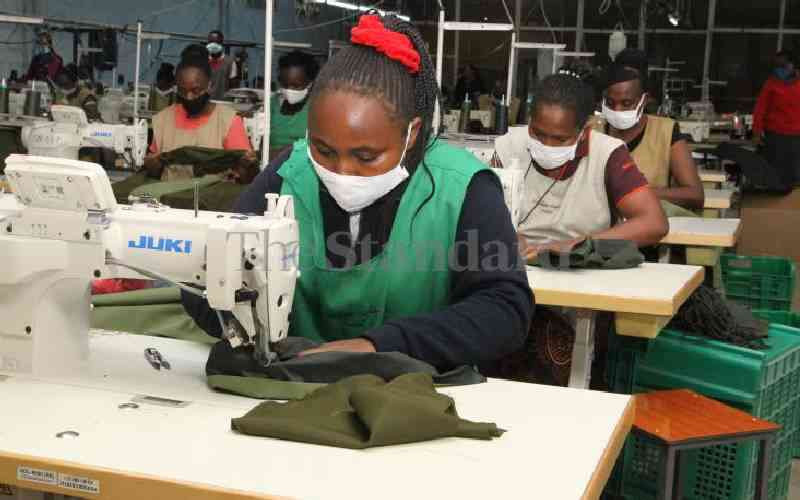By Erick Wamanji
Peter ole Kampus (real name withheld on request) stops to read a text message from his cell phone. The one-word message is coded but he understands what it means. It reminds him to take his antiretroviral drugs and he rushes back to the house for the medicine.
Telemedicine — this is how HIV/Aids is being tackled in Kajiado,150km from Nairobi.
"Sometimes I forget the drugs and the SMS reminds me. This way, I keep the prescription schedule," Kampus explains.
Perhaps, somebody else could also remind him about his drugs responsibility but Kampus doesn’t want to go public about his status and that is why this interview was granted on condition that his identity is never revealed.
But he says he has found ‘someone’ empathetic — a cell phone and is at ease with this arrangement.
Hundreds of residents in this region have enrolled in the telemedicine project, a new concept (in Kenya) that is popular among HIV/Aids patients in Kajiado.
The messages are coded and can only be understood by intended recipients.
This concept is a brainchild of a project, Weltel/Afyatel, a joint collaboration between the University of Manitoba (Canada) and University of Nairobi. The project managers say most remote areas would be ringing with alerts soon.
"The response is quite positive. Many patients have stuck to their drugs schedule. Besides, they are just happy that someone cares. They also want the cell phone programme to continue," says Ms Sarah Karanja, the project co-ordinator.
Dr Richard Lester, the principal researcher, says non-adherence to antiretroviral therapy (ART) poses a risk in HIV management. It results in resistance and drug failure.
This explains why the cell phone concept would be critical to augment patient healthcare support and monitoring. No doubt, the ingenuity is likely to revolutionise the medical sector.
Since the inception of Highly Active Antiretroviral Treatment (Haart), mortality rates occasioned by Aids have significantly dropped. In Haart, multiple anti-HIV drugs are dispensed to patients before they develop Aids symptoms.
However, the Weltel/Afyatel project is the only programme that is pioneering Haart through cell phones.
Platform still basic
"Our cell phone study is a clinic-based phone communication system to support and monitor patients on ARVs. Healthcare workers initiate weekly text messaging to patients as a reminder and to keep in touch," Karanja explains.
The technology platform is still primitive. It uses an ordinary telephone handset where coded messages are sent to many recipients. However, Karanja promises: "We are working on a scalable server-based and smart-phone-based SMS application that will send automated weekly SMS to patients on ARVs."
The initiative was inspired by a 2005 study in Pumwani and Majengo, Nairobi. Residents who attended HIV care clinics requested the cell phone alerts.
"The patients are happy and confident," says Cynthia Sitait, a clinical officer at the Kajiado Afyatel site. She says they also call when they are out of the district to find out how and where they can get the drugs.
"Some even call just to have a chat with us. This implies they are happy to have someone they can open up to. The stigma has significantly reduced," she says.
Part of this study, Mobile Phones: Exceptional Tools for HIV/Aids, Health and Crisis Management, has been published in a medical journal, Lacet.
Even during post-election crisis, the SMS concept proved handy. Many people who were far away from their clinics used to get assistance on ARV or any other medical support.
Experts also used the cell phones to counsel their patients. In Lacet, the researchers say after the violence, one patient was so distressed that she almost stopped taking medicine. But the phone helped much.
"She had severe emotional distress during the crisis but a counsellor provided telephone support, and she succeeded in taking her medications until she could later be seen at the clinic," the report says.
This pilot project is also going on in Nairobi at Coptic Hospital and Pumwani Maternity Hospital.
Telemedicine capitalises on the expanding cell phone network revolution where even remote areas are covered.
"Mobile phones offer low cost, instantaneous and increasingly ubiquitous communications medium, and are unrestricted to location," says the Lacet report.
Low workload
Apart from easing the administration of drugs, health workers say the project has reduced their workload and is timesaving. The quality of healthcare is also improved.
Even WHO and Unaids consider the use of ICT as a priority in settings where healthcare resources are limited.
"To meet the vast challenge of global access to ART, efficient and sustainable communication systems must be constructed to meet patient counselling, monitoring and long term follow-up goals," Lester and others wrote in another study, Cell Phones: Tightening the Communication Gap in Resource Limited Antiretroviral Programmes?
This explains why Kampus is happy.
"I can’t stay without this phone," he says pointing at his rusty handset. "If I get flu or have rashes on my face, I call the doctor and she advises me. She tells me which medicine to take or just assures me the problem is normal and would soon disappear," he says.
[email protected]
 The Standard Group Plc is a multi-media organization with investments in media
platforms spanning newspaper print operations, television, radio broadcasting,
digital and online services. The Standard Group is recognized as a leading
multi-media house in Kenya with a key influence in matters of national and
international interest.
The Standard Group Plc is a multi-media organization with investments in media
platforms spanning newspaper print operations, television, radio broadcasting,
digital and online services. The Standard Group is recognized as a leading
multi-media house in Kenya with a key influence in matters of national and
international interest.
 The Standard Group Plc is a multi-media organization with investments in media
platforms spanning newspaper print operations, television, radio broadcasting,
digital and online services. The Standard Group is recognized as a leading
multi-media house in Kenya with a key influence in matters of national and
international interest.
The Standard Group Plc is a multi-media organization with investments in media
platforms spanning newspaper print operations, television, radio broadcasting,
digital and online services. The Standard Group is recognized as a leading
multi-media house in Kenya with a key influence in matters of national and
international interest.









